Hello and welcome to Part 2 of the Chosen Undead and Dark Souls Pass. Previously, we looked at Chosen Undead and how they could play as a character, but this time we’ll look at what Dark Souls could provide to Smash.

Dark Souls Stage
Firelink Shrine

Firelink Shrine is an important location within the Dark Souls games; especially in 1 and 3. This is the general hub where players go to level up, find lost treasure, and where they start at the beginning of the game. This version is based on the original Dark Souls. This is a rather large stage and, in truth, it’s the largest of all the dlc stages to date so a mock-up design was drawn to better show the stage instead of explaining it.
Fireliank Shrine is a labyrinth of interconnected stairways, causeways, crumbling platforms, pitfalls, and more. While it is the central home for the character, it also has its own perils. Let’s look at two primary features found in the stage: treasure and enemies. Treasure chests will spawn periodically which will reveal various items. One of the unique aspects of this stage is that the treasure chests may store items that characters have lost upon being knocked out. This doesn’t affect Dragoon and Daybreak parts, Franklin Badge, transformation items, Assist Trophies/Pokéballs, items Villager/Isabelle pocketed and character specific items like R.O.B.’s Gyro or Chosen Undead’s Inventory.

The second unique aspect is the variety of enemies. Enemies can spawn at any section of the stage and will rise up from the ground to attack. The bottommost platform of the stage is a graveyard, and jumping down there will cause various skeletal warriors to rise up and attack. They are fairly easy to defeat but their numbers let them swarm. If a player is unlucky, a Giant Skeleton might also appear. Knock an opponent down with them and watch as they get ripped to shreds! The Giant Skeleton only appears on the bottom platform but other enemies can appear in the mid to top tier sections of the stage.
As always, there are cameos that come with the stage. As I mentioned in my Dragon Ball Z Namek stage, cameos aren’t always canonically correct and that’s the case here. While characters who are native to Firelink Shrine will appear, some unconnected characters will also be featured. A total of 8 cameos can appear at one time which also includes Anastacia of Astora always appearing within her “prison”.

The following characters are not connected to this location within Dark Souls but they doesn’t mean they should be excluded so let’s take a look at who would appear:
In addition, at times, cameo characters will vanish and one of the many bosses in Dark Souls will appear in the immediate background. They do not damage players on the stage and are just there for aesthetics.
The appearance of any boss also increases the chance of a Giant Skeleton appearing on the bottom level of the stage. Talking about enemy hazards, let’s look at the kind of enemies that can be spawned and what sort of attacks they do.
While Anor Landor was considered given it appeared in every Dark Souls game, Firelink Shrine was chosen as it had a pivotal role in the first game which also saw a Switch release. For this reason, there is more content across the board from the first game than the sequels.
Dark Souls Mii Outfits

The Dark Souls series has plenty of outfits to choose from that are both iconic and recognizable for fans. However, unlike some of the Mii Costumes previously, these ones will be a bit harder for some Smash fans to recognize. Regardless, the following outfits are based on armor and characters found in the series.
Seigmeyer of Catarina Mii Swordfighter

Yes, this oversized Pillsbury Doughboy wannabe is Siegmeyer of Catarina. This armor is actually worn by two different people: Siegmeyer and his daughter, Sieglinde. The armor can be worn by players and is considered a Medium Armor with high defense in Dark Souls. I’m not sure how they move around in it given how puffy it looks.
Havel Mii Swordfighter

The next outfit is yet another iconic and popular outfit, the Havel armor. This hulking suit was worn by Havel the Rock. By the time of Dark Souls, he is no more but his steady armor lives on. Havel, and those he commanded, hewed suits of armor from rock and wore magical rings that helped carry the burden.
Skeleton Mii Swordfighter

I originally had this Mii Costume set for Artorias but it was removed since his armor is featured in the Chosen Undead’s alternate costumes. Instead of going the route of iconic armies, it felt natural to look to one of the many Dark Soul enemies. Since there isn’t a horror-theme Mii Fighter costume, the Skeleton felt like a good fit. This creature is one of the first the player encounters outside of the Firelink Shrine and, for obvious reasons, the most easy to kill. This isn’t the case in Smash, though, and players don’t gain the advantage of having slimmer limbs and body frame.
Solaire of Astora Swordfighter
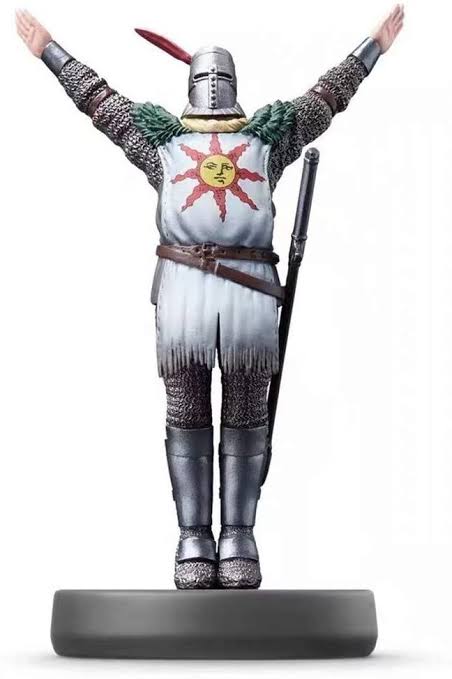
Who none other to wind down the Mii Costumes with than the most iconic character of them: Solaire of Astora. I’ll cover Solaire and his story in the below Spirit Battle section but I do want to touch on why he needs to be a Mii Costume. Solaire is the most iconic and recognizable character in Dark Souls, even more than the player avatars themselves. He’s iconic enough that he even received an Amiibo for the Switch’s remaster of the original game.
Dark Souls Spirit and Spirit Battles

All of the Dark Souls Spirit Battles are stamina battles to reflect the fights in the original game.
Solaire of Astora

Spirit Info
Type: Primary/Grab
Class:



Ability: Weapon Attack & Move Speed ↑
Spirit Battle
Character: Chosen Undead (Armor of the Sun), (Yellow)
(Yellow)
Stage: Palutena’s Temple (Battlefield)
Rules: Stamina Battle
Conditions:
Solaire of Astora is a knight searching for his “very own sun” and adheres to the Lord of Sunlight. Despite being decorated from head to toe in holy imagery, none of his weapons or armor are blessed. He relies on pure strength and skill to defeat his opponents. His fate in the original game is unclear as it is determined by the actions of the player. That being said, his armor can be found in both Dark Souls 2 and 3.
Inspiration:

Spirit Info
Type: Primary/Shield
Class:

Ability: Floaty Jumps
Spirit Battle
Character: (Blue)
(Blue)
Stage: Reset Bomb Forest (Omega)
Rules: Stamina Match
Conditions:
Inspiration
Great Gray Wolf Sif

Spirit Info
Type: Primary/Attack
Class:


Ability: Easier Dodging
Spirit Battle
Character: (Giant) (Black)
(Giant) (Black)
Stage: Garden of Hope
Rules: Stamina Match
Conditions:
Inspiration
Bell Gargoyles

Spirit Info
Type: Support
Class:
Ability: Shield Damage ↑
Spirit Battle
Character: x2 (White)
x2 (White)
Stage: Umbra Clock Tower
Rules: Stamina Match
Conditions:
Inspiration
Knight Lautrec of Carim
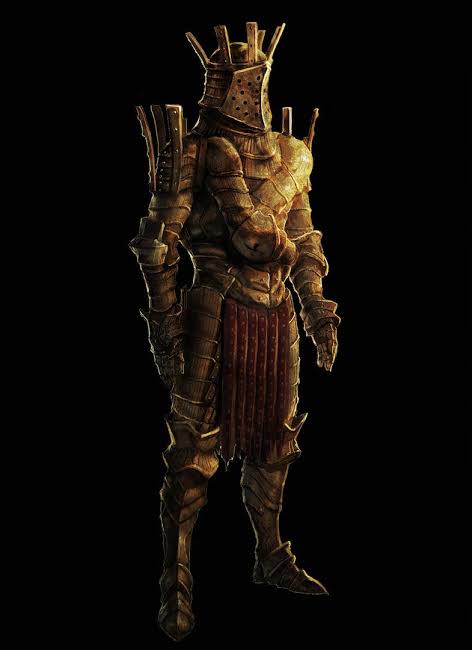
Spirit Info
Type: Support
Class:
Ability: Weapon Attack ↑
Spirit Battle
Character: (Yellow)
(Yellow)
Stage: Firelink Shrine
Rules: Stock Battle (2 stocks)
Conditions:
Inspiration
Nashandra

Spirit Info
Type: Primary/Grab
Class:

Ability: Poison Immunity
Spirit Battle
Character: (Female)
(Female)
Stage: Dracula’s Castle
Rules: Stamina Match
Conditions:
Inspiration
Curse-Rotted Greatwood

Spirit Info
Type: Support
Class:



Ability: Slow Super Armor
Spirit Battle
Character: Giant (Green),
(Green), 
Stage: Castle Siege
Conditions:
Inspiration
Gwyn, Lord of Cinder
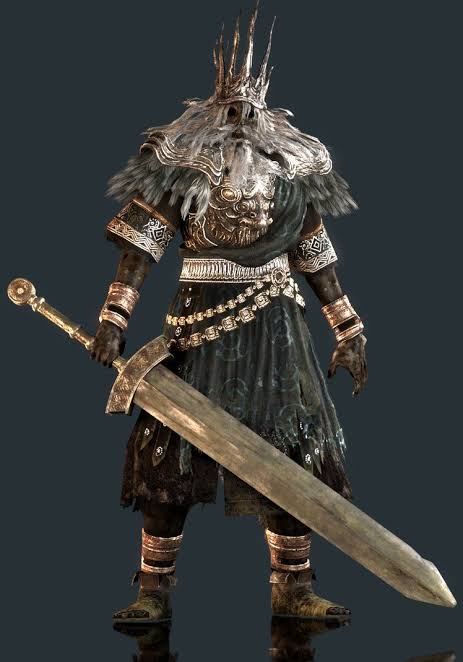
Spirit Info
Type: Primary/Shield
Class:




Ability: Hyper Smash Attacks
Spirit Battle
Character: (White)
(White)
Stage: Great Cave Offensive (Battlefield)
Rules: Stamina Match
Conditions:
Inspiration
Dark Souls Music
Due to the original score typically consisting of soft piano or epic orchestra themes, music that should receive a remix are included below along with an example of a remix from (list artist name here).
Firelink Shrine - Dark Souls
Remix
Prologue - Dark Souls
Bell Gargoyle - Dark Souls
Ornstein & Smough - Dark Souls
Gwyn, Lord of Cinder - Dark Souls
Velstadt, The Royal Aegis - Dark Souls II
Dragonslayer - Dark Souls II
Aldia, Scholar of the First Sin - Dark Souls II
Remix
Main Theme (Dark Souls III) - Dark Souls III
Curse Rotted Greatwood - Dark Souls III
Dancer of the Boreal Valley - Dark Souls III
Nameless King - Dark Souls III
Soul of Cinder - Dark Souls III
Remix
Outside of the Fighter Pass
Item: Estus Flask
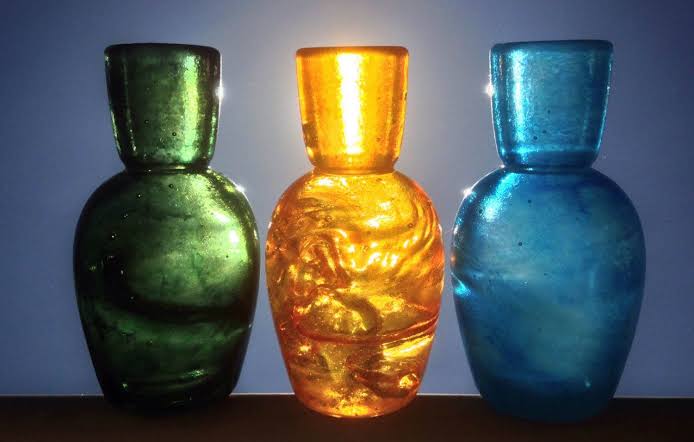
Even if the Chosen Undead has this in their moveset, having this iconic potion as an item would be welcomed. When drunk, the player can heal for 20% and it has five uses. These uses do not reset even if the item is knocked out of the holder’s hands.
Item: White Sign Soapstone

Taking the White Sign Soapstone and placing it on the ground causes white runes to appear and will begin to glow. Within eight seconds, a CPU ally will appear to aid the player. They will have a whitish hue to them which is similar in appearance to fighters controlled by Galeem during the World of Light. This is purely aesthetic and doesn’t alter gameplay. The summoned character will be randomly picked from the roster and it won’t be anyone already in the match. The summoner character has 80% health and will vanish when its health is depleted or 40 seconds have passed.
Boss Battle: Ornstein and Smough
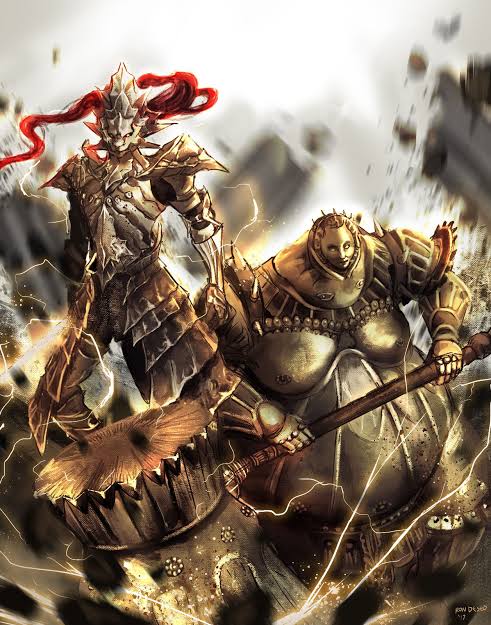
Bosses are a key element in Dark Souls and are really what makes the series great. There are so many amazing battles that it was tough to choose which one was best suited as a boss battle for Smash. Ornstein and Smough were ultimately chosen due to how iconic their boss fight was. These two allies served Gwyn, Lord of Cinder during his reign and still serve in his death. Ornstein was one of Gwyn’s most trusted generals while Smough was the royal executioner, a job he delighted in to the point he even ate those he sentenced to death. In the battle, these gigantic knights will attack either side within a ruined cathedral. There would be enough space to accommodate the two and the player. Which side either one appears on is randomized which makes the battle difficult to plan for going into it, much like its home series.
Ornstein will attack with jabs and thrusts infused with electricity and will sometimes jump into the air then land back down with a thunderous explosion. Smough, on the other hand, will attack using massive hammer swings and destroying nearby pillars which cause chunks of debris to fly. Both knights are difficult to fight on their own but fighting them together is a long and difficult affair, even for Smash.
Closing
Dark Souls is an influential series that helped pave the way for future fantasy-oriented games. It showed that games with high difficulty are marketable and can become popular. Prior to this, many studios and publishers were afraid high difficulty would turn away players. This series would go on to be a commercial success and receive plenty of awards and recognition. The series isn’t as heavily tied to Nintendo as some other third-party games but, then again, Persona 5 and Metal Gear Solid are similar in that regard. The series truly deserves to pass through the Bonfire and take its rightful place within Ultimate’s roster.
Credits
Editing: @Zerp
Graphics: Venus of the Desert Bloom
, @Zerp
Venus of the Desert Bloom
, @Zerp
Social Media: @Zerp
Dark Souls Stage
Firelink Shrine
Firelink Shrine is an important location within the Dark Souls games; especially in 1 and 3. This is the general hub where players go to level up, find lost treasure, and where they start at the beginning of the game. This version is based on the original Dark Souls. This is a rather large stage and, in truth, it’s the largest of all the dlc stages to date so a mock-up design was drawn to better show the stage instead of explaining it.
Fireliank Shrine is a labyrinth of interconnected stairways, causeways, crumbling platforms, pitfalls, and more. While it is the central home for the character, it also has its own perils. Let’s look at two primary features found in the stage: treasure and enemies. Treasure chests will spawn periodically which will reveal various items. One of the unique aspects of this stage is that the treasure chests may store items that characters have lost upon being knocked out. This doesn’t affect Dragoon and Daybreak parts, Franklin Badge, transformation items, Assist Trophies/Pokéballs, items Villager/Isabelle pocketed and character specific items like R.O.B.’s Gyro or Chosen Undead’s Inventory.
The second unique aspect is the variety of enemies. Enemies can spawn at any section of the stage and will rise up from the ground to attack. The bottommost platform of the stage is a graveyard, and jumping down there will cause various skeletal warriors to rise up and attack. They are fairly easy to defeat but their numbers let them swarm. If a player is unlucky, a Giant Skeleton might also appear. Knock an opponent down with them and watch as they get ripped to shreds! The Giant Skeleton only appears on the bottom platform but other enemies can appear in the mid to top tier sections of the stage.
As always, there are cameos that come with the stage. As I mentioned in my Dragon Ball Z Namek stage, cameos aren’t always canonically correct and that’s the case here. While characters who are native to Firelink Shrine will appear, some unconnected characters will also be featured. A total of 8 cameos can appear at one time which also includes Anastacia of Astora always appearing within her “prison”.
- Anastacia of Astora (she is always here)
- Rhea of Thorolund
- Crestfallen Warrior
- Knight Lautrec of Carim
- Griggs of Vinheim
- Kingseeker Frampt
- Siegmeyer of Catarina
- Giant Crow
The following characters are not connected to this location within Dark Souls but they doesn’t mean they should be excluded so let’s take a look at who would appear:
- Solaire of Astora
- Alvina
- Black Iron Tarkus
- Crossbreed Priscilla
- Andre of Astora
- Witch Beatrice
- Paladin Leeroy
- Oscar, Knight of Astora
- Elizabeth
- Emerald Herald
- Licia of Lindeldt
- Rat King
- Company Captain Yorshka
- Yuria of Londor
- Havel the Rock
- Sirris of the Sunless Realms
- Ringfinger Leonhard
In addition, at times, cameo characters will vanish and one of the many bosses in Dark Souls will appear in the immediate background. They do not damage players on the stage and are just there for aesthetics.
- Black Knight
- Silver Knight
- Gwyn, Lord of Cinder
- Manus, Father of the Abyss
- Artorias the Abysswalker
- Great Gray Wolf Sif
- Dark Sun Gwyndolin
- Asylum Demon
- Aldia, Scholar of the First Sun
- Elana, the Squalid Queen
- Ancient Dragon
- Soul of Cinder
- Dragonslayer Armor
- Curse-Rotted Greatwood
- Slave Knight Gael
The appearance of any boss also increases the chance of a Giant Skeleton appearing on the bottom level of the stage. Talking about enemy hazards, let’s look at the kind of enemies that can be spawned and what sort of attacks they do.
- Skeleton Warrior (Sword & Shield): It will run around while chopping at enemies. It also can use the shield to protect itself.
- Hollow Archer (Bow & Arrow): It will avoid combat and instead fire arrows from a distance.
- Undead Soldier (Battleaxe): It dashes forward and uses the force to deliver a powerful downward slash attack. It’s a fairly powerful attack.
Giant Skeleton (Greatsword): It lumbers about and will try to deal high damage by slamming its greatsword down. It’s slow but deals the same amount of damage and knockback as Ike’s fully charged Side Smash.
While Anor Landor was considered given it appeared in every Dark Souls game, Firelink Shrine was chosen as it had a pivotal role in the first game which also saw a Switch release. For this reason, there is more content across the board from the first game than the sequels.
Dark Souls Mii Outfits
The Dark Souls series has plenty of outfits to choose from that are both iconic and recognizable for fans. However, unlike some of the Mii Costumes previously, these ones will be a bit harder for some Smash fans to recognize. Regardless, the following outfits are based on armor and characters found in the series.
Seigmeyer of Catarina Mii Swordfighter
Yes, this oversized Pillsbury Doughboy wannabe is Siegmeyer of Catarina. This armor is actually worn by two different people: Siegmeyer and his daughter, Sieglinde. The armor can be worn by players and is considered a Medium Armor with high defense in Dark Souls. I’m not sure how they move around in it given how puffy it looks.
Havel Mii Swordfighter

The next outfit is yet another iconic and popular outfit, the Havel armor. This hulking suit was worn by Havel the Rock. By the time of Dark Souls, he is no more but his steady armor lives on. Havel, and those he commanded, hewed suits of armor from rock and wore magical rings that helped carry the burden.
Skeleton Mii Swordfighter
I originally had this Mii Costume set for Artorias but it was removed since his armor is featured in the Chosen Undead’s alternate costumes. Instead of going the route of iconic armies, it felt natural to look to one of the many Dark Soul enemies. Since there isn’t a horror-theme Mii Fighter costume, the Skeleton felt like a good fit. This creature is one of the first the player encounters outside of the Firelink Shrine and, for obvious reasons, the most easy to kill. This isn’t the case in Smash, though, and players don’t gain the advantage of having slimmer limbs and body frame.
Solaire of Astora Swordfighter
Who none other to wind down the Mii Costumes with than the most iconic character of them: Solaire of Astora. I’ll cover Solaire and his story in the below Spirit Battle section but I do want to touch on why he needs to be a Mii Costume. Solaire is the most iconic and recognizable character in Dark Souls, even more than the player avatars themselves. He’s iconic enough that he even received an Amiibo for the Switch’s remaster of the original game.
Dark Souls Spirit and Spirit Battles

All of the Dark Souls Spirit Battles are stamina battles to reflect the fights in the original game.
Solaire of Astora
Spirit Info
Type: Primary/Grab
Class:




Ability: Weapon Attack & Move Speed ↑
Spirit Battle
Character: Chosen Undead (Armor of the Sun),
Stage: Palutena’s Temple (Battlefield)
Rules: Stamina Battle
Conditions:
- Wii Fit Trainer prefers using the Neutral Special
- Chosen Undead often does the Up Taunt “Praise the Sun”
- Fire Flowers, Fire Bar, and Hotheads appears often
Solaire of Astora is a knight searching for his “very own sun” and adheres to the Lord of Sunlight. Despite being decorated from head to toe in holy imagery, none of his weapons or armor are blessed. He relies on pure strength and skill to defeat his opponents. His fate in the original game is unclear as it is determined by the actions of the player. That being said, his armor can be found in both Dark Souls 2 and 3.
Inspiration:
- Wii Fit Trainer’s use of the Neutral Special is a reference to Solaire’s fixation on the “sun”.
- The Hothead is also a nod to this fixation. The Fire Flower is also included due to the Fire-themed items. Fire being a common element in the games.
Spirit Info
Type: Primary/Shield
Class:


Ability: Floaty Jumps
Spirit Battle
Character:
Stage: Reset Bomb Forest (Omega)
Rules: Stamina Match
Conditions:
- The opponent jumps often
- The opponent often uses Smash Attacks when not jumping.
- Often uses the Neutral Special
- Takes more damage while on the ground
Inspiration
- Bayonetta’s preference for jumping and Smash Attacks comes from the Moonlight Butterfly.
- Her use of the Neutral Special also is a reference to the energy attacks from this boss.
- Bayonetta getting more damage while on the ground is a reference to how the Moonlight Butterfly could be damaged more after it landed.
- Bayonetta also has butterfly wing visuals when she does her second jump.
- The Reset Bomb Forest looks similar in appearance and environment to the boss lair the Moonlight Butterfly was fought in.
Great Gray Wolf Sif
Spirit Info
Type: Primary/Attack
Class:



Ability: Easier Dodging
Spirit Battle
Character:
Stage: Garden of Hope
Rules: Stamina Match
Conditions:
- The opponent starts equipped with a Killing Edge.
- Opponent is Giant
- Opponent’s item attacks deal more damage.
- Opponent becomes slower at 25% Stamina
Inspiration
- Wolf having a Killer Edge references how Great Gray Wolf Sif wields a massive sword.
- The stage reflects the Forest-like arena that this boss is faced in.
- Sif would start to limp after being critically hurt which is referenced by Wolf’s speed decreasing at 25% Stamina.
Bell Gargoyles
Spirit Info
Type: Support
Class:

Ability: Shield Damage ↑
Spirit Battle
Character:
Stage: Umbra Clock Tower
Rules: Stamina Match
Conditions:
- Opponent prefers jumping and aerial attacks.
- The second opponent will only appear after the first’s Stamina reaches 50%.
- Opponents comes equipped with an Ore Club and Back Shield
- Opponent has super armor
Inspiration
- The opponents having super armor is a reference to the stone-like nature of the enemies.
- The second Charizard appearing after the first has 50% Health is a reference to the Bell Gargoyle battle.
Knight Lautrec of Carim
Spirit Info
Type: Support
Class:

Ability: Weapon Attack ↑
Spirit Battle
Character:
Stage: Firelink Shrine
Rules: Stock Battle (2 stocks)
Conditions:
- Opponent has increased attack speed
- The opponent has increased damage against shields.
- Opponent primarily uses neutral attacks and not specials
Inspiration
- Like Lautrec, Dark Pit wields double blades.
- Also like Lautrec, Dark Pit is a dark horse-type character. The fandom consider Lautrec to be a jerk mcjerkface.
- Lautrec’s attacks could still do damage against blocking opponents which is referenced by it dealing more damage to shields.
- Dark Pit favoring neutral attacks is due to Lautrec not using bows and such.
Nashandra
Spirit Info
Type: Primary/Grab
Class:


Ability: Poison Immunity
Spirit Battle
Character:
Stage: Dracula’s Castle
Rules: Stamina Match
Conditions:
- The opponent's Tomes have unlimited uses.
- The opponent comes equipped with a Death Scythe.
- Prefers using the Down Special
- The Down Special heals and damages more
Inspiration
- Nashandra uses a variety of spells much like Robin.
- She also uses curses to drain away health whiich Nosferatu references.
- She wields a scythe in battle which is referenced by the Death Scythe.
Curse-Rotted Greatwood
Spirit Info
Type: Support
Class:




Ability: Slow Super Armor
Spirit Battle
Character: Giant
Stage: Castle Siege
Conditions:
- Mii Brawlers will constantly spawn onto the stage
- The floor is poisoned.
- The opponent can deal damage by jumping and dashing.
- It receives more damage when hit on its underside.
Inspiration
- The Mii Brawlers protecting Ivysaur references the denizens of the Undead Parish protecting the cursed tree
- It could use its weight to pulverize its enemies.
- The floor being poisoned comes from how it would spray poison around the battlefield.
Gwyn, Lord of Cinder
Spirit Info
Type: Primary/Shield
Class:





Ability: Hyper Smash Attacks
Spirit Battle
Character:
Stage: Great Cave Offensive (Battlefield)
Rules: Stamina Match
Conditions:
- The opponent spawns with a Fire Bar
- Items spawn frequently.
- Prefers using Smash Attacks
- The opponent often uses the side special.
Inspiration
- The use of the Fire Bar comes from Gwyn’s weapon of choice.
- Ganondorf using the Side Special is a direct reference to one of Gwyn’s attacks.
- Great Cave Offensive is somewhat similar in appearance to the arena that Gwyn is fought in.
Dark Souls Music
Due to the original score typically consisting of soft piano or epic orchestra themes, music that should receive a remix are included below along with an example of a remix from (list artist name here).
Remix
Remix
Remix
Outside of the Fighter Pass
Item: Estus Flask
Even if the Chosen Undead has this in their moveset, having this iconic potion as an item would be welcomed. When drunk, the player can heal for 20% and it has five uses. These uses do not reset even if the item is knocked out of the holder’s hands.
Item: White Sign Soapstone
Taking the White Sign Soapstone and placing it on the ground causes white runes to appear and will begin to glow. Within eight seconds, a CPU ally will appear to aid the player. They will have a whitish hue to them which is similar in appearance to fighters controlled by Galeem during the World of Light. This is purely aesthetic and doesn’t alter gameplay. The summoned character will be randomly picked from the roster and it won’t be anyone already in the match. The summoner character has 80% health and will vanish when its health is depleted or 40 seconds have passed.
Boss Battle: Ornstein and Smough
Bosses are a key element in Dark Souls and are really what makes the series great. There are so many amazing battles that it was tough to choose which one was best suited as a boss battle for Smash. Ornstein and Smough were ultimately chosen due to how iconic their boss fight was. These two allies served Gwyn, Lord of Cinder during his reign and still serve in his death. Ornstein was one of Gwyn’s most trusted generals while Smough was the royal executioner, a job he delighted in to the point he even ate those he sentenced to death. In the battle, these gigantic knights will attack either side within a ruined cathedral. There would be enough space to accommodate the two and the player. Which side either one appears on is randomized which makes the battle difficult to plan for going into it, much like its home series.
Ornstein will attack with jabs and thrusts infused with electricity and will sometimes jump into the air then land back down with a thunderous explosion. Smough, on the other hand, will attack using massive hammer swings and destroying nearby pillars which cause chunks of debris to fly. Both knights are difficult to fight on their own but fighting them together is a long and difficult affair, even for Smash.
Closing
Dark Souls is an influential series that helped pave the way for future fantasy-oriented games. It showed that games with high difficulty are marketable and can become popular. Prior to this, many studios and publishers were afraid high difficulty would turn away players. This series would go on to be a commercial success and receive plenty of awards and recognition. The series isn’t as heavily tied to Nintendo as some other third-party games but, then again, Persona 5 and Metal Gear Solid are similar in that regard. The series truly deserves to pass through the Bonfire and take its rightful place within Ultimate’s roster.
Credits
Editing: @Zerp
Graphics:
Social Media: @Zerp
Last edited:

